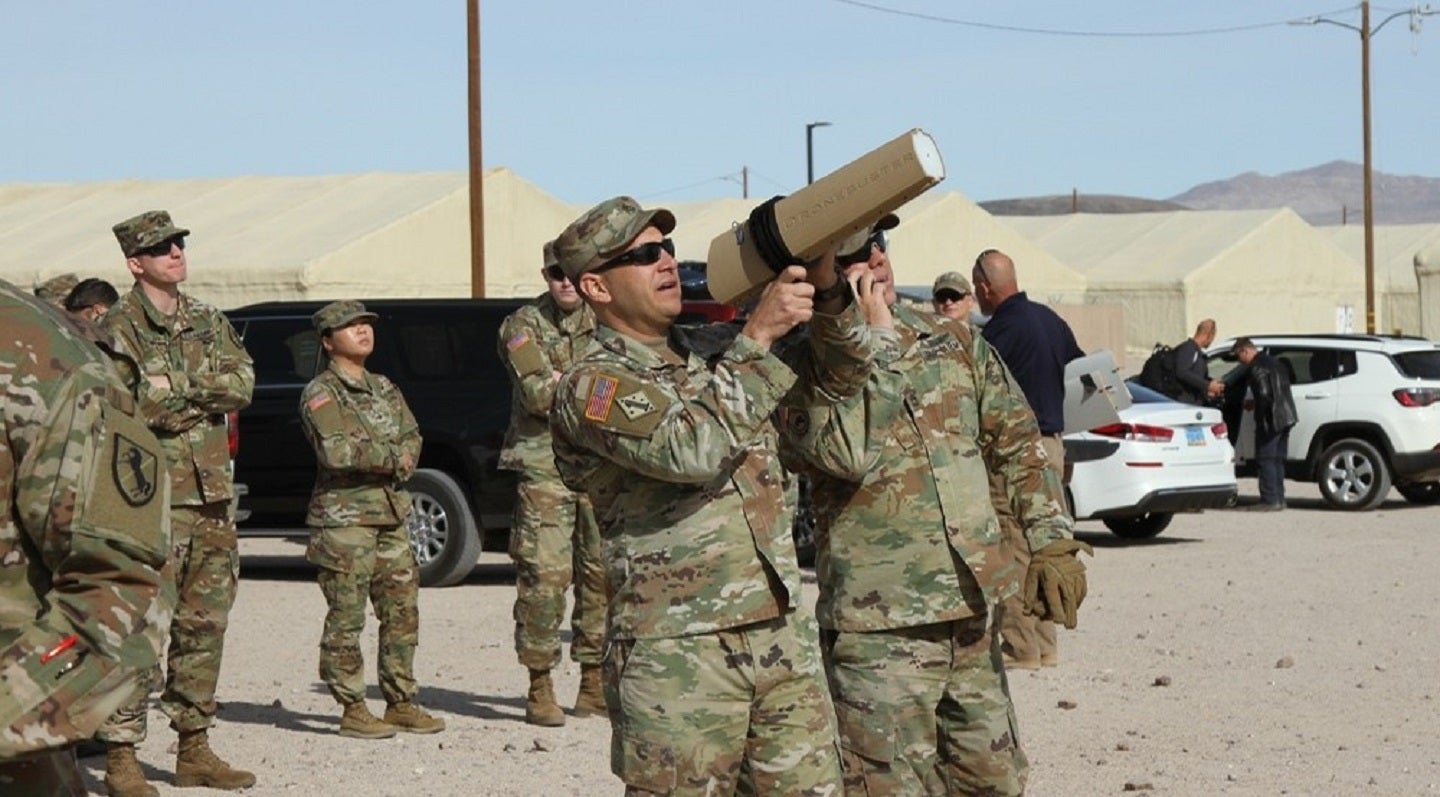John Hill

A senior Observer Coach/Trainer fires a Dronebuster Electronic Warfare System at the Counter Unmanned Aircraft System Training in the Rotational Unit Bivouac Area on January 30, 2020. Most recently, DroneShield have launched its latest GNSS denial system and a Five Eyes government has made an initial order for further development. Credit: DVIDS.
The Australia and US listed counter-unmanned aerial system (C-UAS) company, DroneShield, has announced the launch and first order for its area-specific satellite denial system.
There are various Global Navigation Satellite Systems (GNSS) around the world; most notably the US GPS, as well as Russia’s GLONASS, China’s BeiDou and Europe’s Galileo system.
GlobalData forecasts the global military GNSS market, valued at $1.3bn in 2022, will grow at a compound annual growth rate of 4.1% in the next decade. The intelligence company expects this to reach $1.9bn by 2032 and cumulatively value $16.6bn over the period.
GPS provides receivers with information for three services – position, navigation, and time – with all three being subject to intentional interference to concerning effect. This interference can be either indirect jamming of the signal in an area or the selective targeting of a specific device with disingenuous signals, known as ‘spoofing’.
An undisclosed Five Eyes government (FVEY, referring to Australia, Canada, New Zealand, the UK and US) has requested that the C-UAS business develop its latest area-specific GNSS denial capability further in a funded research and development (R&D) project.
DroneShield expects this project will be followed by a series of others, each requiring more advanced development, and therefore greater funds. Neither party has divulged the cost of the initial project, but they will be release the amount within the next two years.
C-UAS capabilities
According to GlobalData’s thematic research report on C-UAS Technologies (2022), the development of UAS that can operate in a GNSS-denied environment could influence the C-UAS market going forward.
Emerging technologies such as quantum radars will enable the development of precision positioning, navigation, and timing (PNT) systems for use in GPS-denied environments. This will render current GNSS jamming systems, which attempt to disrupt the connection between platforms and satellites, ineffective, posing a significant challenge to current C-UAS systems.
To the US and its allies, their main geopolitical adversaries are Russia and China, who are both actively pursuing the further development of military UASs. Russia has deployed UASs extensively in the conflict in Ukraine.
The US Department of Defense’s FY2023 budget had planned to spend at least $668m on C-UAS research and development and at least $78m on C-UAS procurement. The department’s small C-UAS development programmes were streamlined in December 2019. The Army acted as the executive agent overseeing all of its development efforts.
No comments:
Post a Comment